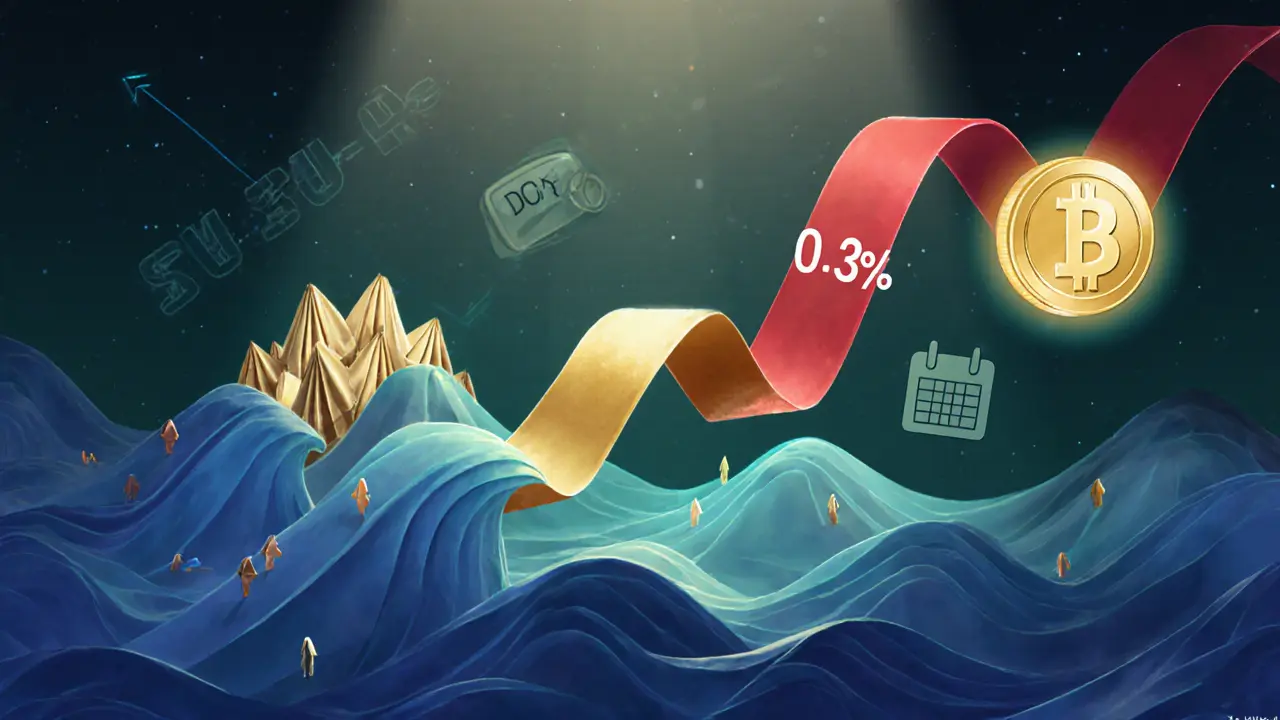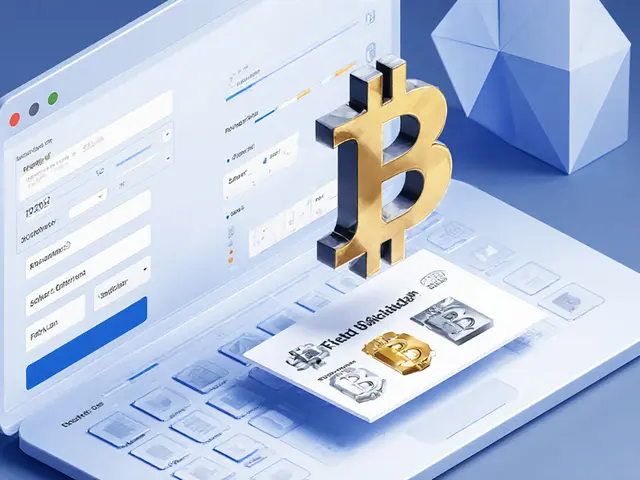SushiSwap V3 Fee Calculator
Fee Structure Overview
Each swap on SushiSwap V3 incurs a 0.30% fee, split between liquidity providers and SUSHI stakers.
0.25% goes to liquidity providers
0.05% goes to xSUSHI stakers
This calculator helps estimate your potential earnings or costs based on trading activity.
Estimated Earnings
When it comes to decentralized exchanges, SushiSwap V3 (Core) is an Automated Market Maker built on the Ethereum blockchain that launched in 2023, offering concentrated liquidity, fee sharing and native token incentives. By October 2025 the protocol holds roughly $3.99billion in total value locked (TVL) and has processed over $69.32billion in cumulative trading volume. If you’re weighing whether to swap, farm or stake on SushiSwap, you’ll want to understand its fee model, liquidity dynamics, and recent feature upgrades - that’s what this review covers.
Key Takeaways
- SushiSwap V3 (Core)offers a 0.30% total fee split (0.25% to liquidity providers, 0.05% to SUSHI stakers), making it cheaper than many centralized venues.
- Concentrated liquidity can boost yields but demands active price‑range management to avoid impermanent loss.
- Recent additions - Limit Orders and Dollar‑Cost‑Averaging (DCA) - bring the platform closer to traditional exchange functionality.
- Support for six major wallets and a multichain deployment on Polygon expands accessibility.
- Compared with Uniswap V3, SushiSwap’s dual‑fee distribution and Onsen reward program give SUSHI holders a tangible edge.
How SushiSwap V3 Works
The core of SushiSwap V3 is the Automated Market Maker (AMM) model. Traders trade against liquidity pools rather than a central order book. The major upgrade from V2 is concentrated liquidity: providers can allocate capital to a specific price range (“ticks”), which concentrates depth where it matters most. This mirrors the approach pioneered by Uniswap V3 but adds a Sushi‑specific fee‑sharing twist.
Fee Structure and Rewards
Every swap on SushiSwap V3 incurs a 0.30% fee. The breakdown is:
- 0.25% goes straight to the pool’s liquidity providers.
- 0.05% is routed to xSUSHI stakers - the wrapped version of the native SUSHI token.
This dual‑tier model means SUSHI holders earn a share of every trade, even if they are not supplying liquidity. The Onsen Program further spices things up by offering boosted rewards for liquidity added to newly‑listed tokens, a feature Uniswap lacks.
Recent Feature Additions
July8,2025 marked a milestone when SushiSwap shipped two trader‑oriented tools:
- Limit Orders - users set a maximum buy price or minimum sell price, and the protocol executes once the market hits the defined tick.
- Dollar‑Cost‑Averaging (DCA) - automated recurring swaps let you spread purchases over time, reducing exposure to short‑term volatility.
Both tools run on‑chain, meaning they inherit Ethereum gas costs, but they eliminate the need for external bots or centralized order‑book services.

Liquidity Landscape
As of October2025, SushiSwap hosts three distinct coins across five trading pairs, yet the TVL exceeds $3.99billion, indicating deep pools for the supported assets. The average bid‑ask spread sits at 0.634%, comfortably below most centralized platforms. However, because the platform only supports a limited token roster, traders seeking niche altcoins must look elsewhere or wait for future listings.
Multichain Reach - Polygon Integration
Beyond Ethereum, SushiSwap runs a full suite on Polygon. Polygon’s lower gas fees make small‑ticket swaps and frequent DCA strategies far more economical. All core features - swaps, concentrated liquidity, farming, staking and governance - mirror the Ethereum version, allowing users to hop chains without learning a new UI.
Comparing SushiSwap V3 to Uniswap V3
| Feature | SushiSwap V3 (Core) | Uniswap V3 |
|---|---|---|
| Fee split | 0.25% LP+0.05% xSUSHI | 0.30% LP only |
| Reward programs | Onsen boosted rewards, continuous SUSHI mining | Standard fee distribution |
| Limit Orders | Available (2025) | Not native |
| DCA | Available (2025) | Not native |
| Supported chains | Ethereum+Polygon (multichain) | Ethereum (L2 extensions separate) |
| Token coverage (Oct2025) | 3 coins / 5 pairs | ~100 coins / 200+ pairs |
In short, SushiSwap gives SUSHI holders a direct fee slice and more trader‑friendly tools, while Uniswap still enjoys broader asset diversity.
Getting Started - Step‑by‑Step
- Choose a supported wallet (MetaMask, Coinbase Wallet, Trust Wallet, Ledger, WalletConnect, or Frame) and connect it via the "Connect Wallet" button.
- Ensure you have some Ethereum (ETH) for gas or use Polygon’s MATIC for cheaper swaps.
- Navigate to the "Swap" tab, select your token pair, and enter the amount. Adjust the price range if you’re providing liquidity instead of swapping.
- To earn rewards, click "Liquidity" → "Add Liquidity" → set your desired tick range, then confirm the transaction.
- Stake earned SUSHI in the SushiBar to receive xSUSHI and start sharing protocol fees.
- Explore the "Onsen" page for boosted farms and the “Limit Orders” panel for conditional trades.
All actions are performed on‑chain, so keep an eye on gas prices. The Sushi Academy offers short videos and step‑by‑step guides if you hit a snag.

Risk Factors and Security Considerations
Because SushiSwap is a permission‑less protocol, there’s no custodial safety net. Your assets are only as safe as the smart contracts. Although the code has undergone multiple audits, the DeFi space remains prone to exploits and flash‑loan attacks. Additionally, the platform’s unregulated status means you have limited legal recourse if something goes wrong.
Gas fees on Ethereum can erode small‑scale trades, so using Polygon or bundling transactions is advisable for modest amounts. Finally, concentrated liquidity, while lucrative, can expose you to impermanent loss if the market moves out of your chosen price range. Treat liquidity provision like a short‑term position and monitor it regularly.
Future Outlook
Developers have signaled more upgrades: cross‑chain bridges, expanded token listings, and a potential on‑chain credit line for margin‑like exposure. If the DeFi regulatory environment stabilizes, SushiSwap could attract institutional liquidity looking for higher capital efficiency. Price analysts project SUSHI could touch $0.87 by 2030, but that hinges on sustained TVL growth and community participation.
Bottom Line
If you value lower fees, ongoing token rewards, and newer trading tools, SushiSwap V3 (Core) offers a compelling package-especially for users comfortable navigating concentrated liquidity. Its token‑centric incentive model differentiates it from Uniswap, while the multichain rollout on Polygon mitigates Ethereum’s gas pain. However, the limited token selection and inherent DeFi risks mean it’s best paired with broader portfolios rather than serving as the sole exchange.
Frequently Asked Questions
What is the total fee on SushiSwap V3?
The protocol charges a flat 0.30% fee per swap, split into 0.25% for liquidity providers and 0.05% for xSUSHI stakers.
How does concentrated liquidity differ from regular liquidity?
Concentrated liquidity lets providers allocate capital to a custom price range instead of the whole price curve. This concentrates depth where trades occur, potentially boosting fees earned, but it also requires active management to avoid impermanent loss if price moves outside the range.
Can I use SushiSwap on a mobile device?
Yes. The web UI is responsive and works with mobile wallets like MetaMask Mobile, Trust Wallet, and Coinbase Wallet. All features-including Limit Orders and DCA-are accessible from a phone browser.
What is the Onsen Program?
Onsen is SushiSwap’s incentive scheme that offers extra SUSHI rewards for providing liquidity to newly‑launched or promoted token pairs. The program refreshes weekly, giving early participants a higher APR than standard pools.
Is SushiSwap safe to use?
The protocol has undergone multiple third‑party audits and has a solid track record, but like any DeFi platform it carries smart‑contract risk and no regulatory protection. Use only funds you can afford to lose and consider using a hardware wallet for added security.





Andrew Lin
SUSHI IS A TRAP FOR AMERICANS, WAKE UP!!